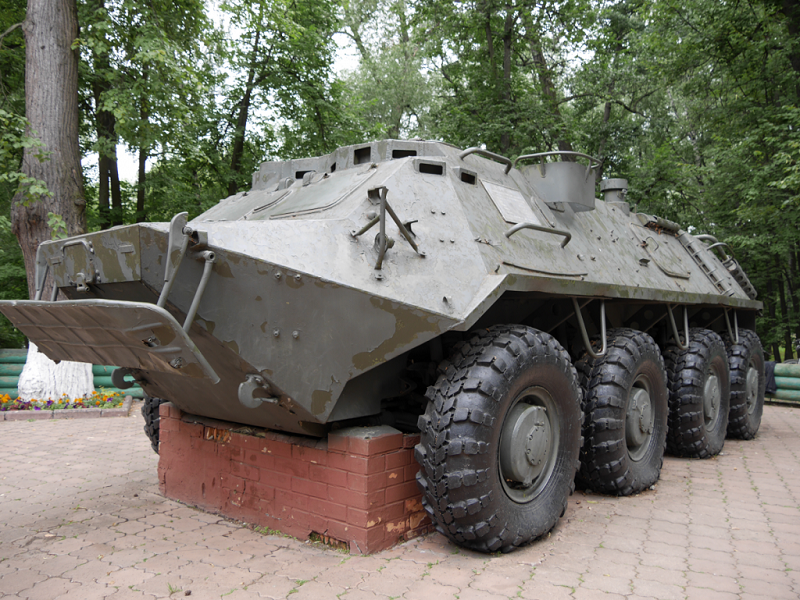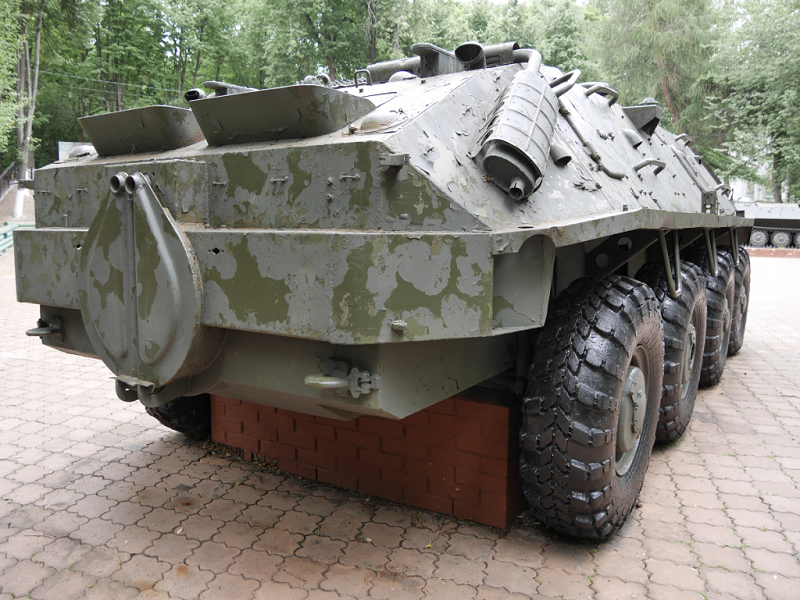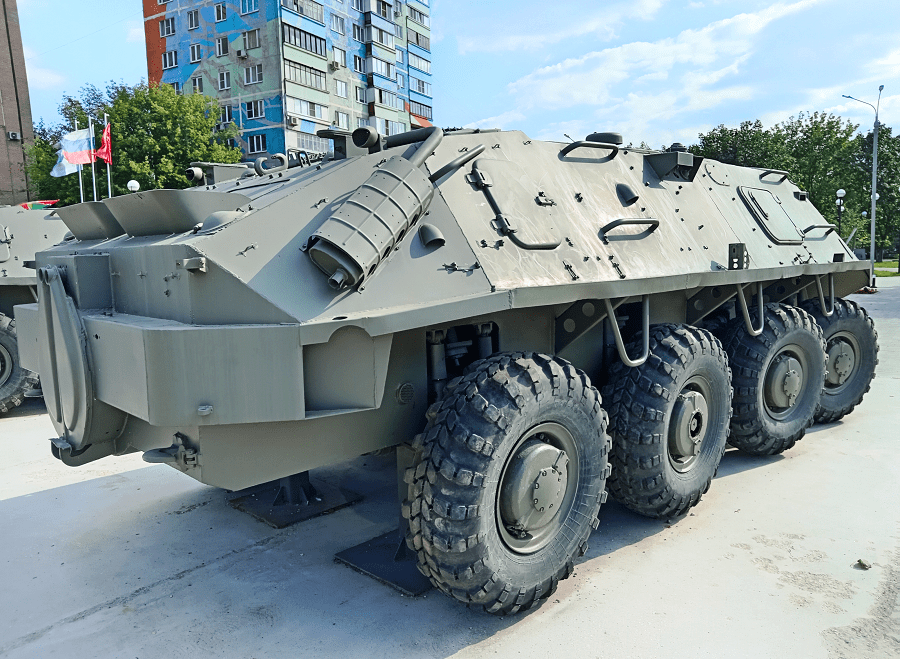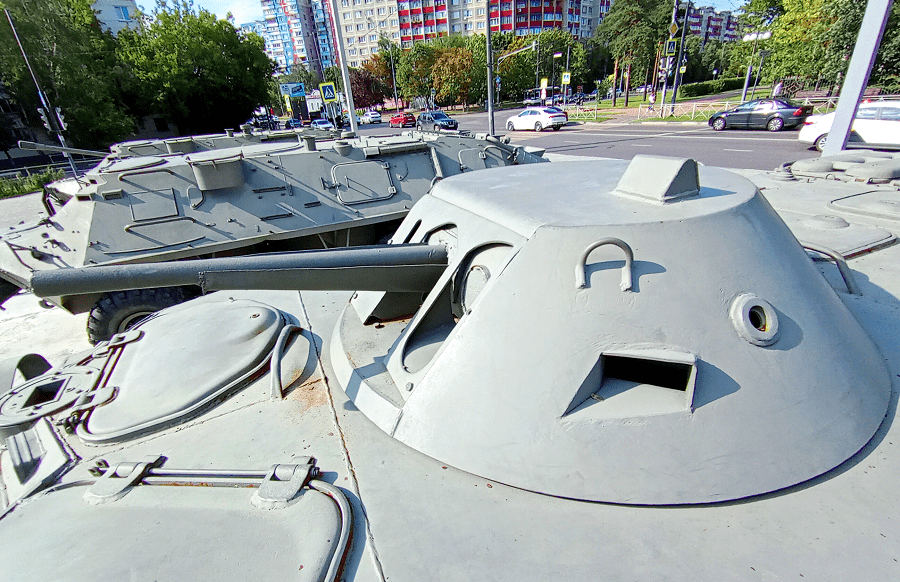BTR-70 in Ramenskoye (near Moscow, Russia)
The BTR-70 is an eight-wheeled armored personnel carrier (Russian: бронетранспортёр, БТР, romanized: bronetransportyor, lit. ’armored carrier’) originally developed by the Soviet Union during the late 1960s under the manufacturing code GAZ-4905. On August 21, 1972, it was accepted into Soviet service and would later be widely exported. Large quantities were also produced under license in Romania as the TAB-77.
The BTR-70 was developed as a potential successor for the earlier BTR-60 series of Soviet wheeled armored personnel carriers, specifically the BTR-60PB, which it most closely resembled. It evolved out of an earlier, unsuccessful project known as the GAZ-50 to design a new wheeled infantry fighting vehicle on the chassis and drive train of a BTR-60PB. It initially received the NATO reporting name BTR M1970.
In 1971, the Soviet Armed Forces began investigating the possibility of an updated BTR-60PB redesigned to make the vehicle more compatible with the BMP-1 in terms of tactical training. This resulted in the development of a BTR-60PB prototype essentially converted into a wheeled infantry fighting vehicle, designated Obiekt 50 or GAZ-50. Despite retaining the original BTR-60PB chassis, the GAZ-50 incorporated several elements of the BMP’s design, including similar seating arrangements in the passenger compartment.
The revised internal layout reduced the number of passengers to nine. New hatches were also provided for debarking in the lower hull, between the second and third wheel stations. Other modifications included a slightly thicker hull, increased power-to-weight ratio, and additional firing ports. Another feature retained from the BTR-60 was the twin-engine arrangement, although in the GAZ-50 torque produced by the right engine powered the first and third wheel stations, while the left engine powered the second and fourth.
This alteration was to allow the vehicle to continue moving even if one engine failed. The prototype was armed with a turret resembling that of the BMP-1, incorporating the same 73-mm 2A28 Grom low-pressure smoothbore cannon.
Country: Soviet Union
Years of production: 1972—
Length: 7535 mm
Width: 2800 mm
Height: 2235 mm
Armor: 6-10 mm
Capacity: 10 persons
Engine: 2 × ZMZ-4905
Engine (specs): 8 cylinders; 4250 cc
Power: 240 HP
Max speed: 80 km/h
Range: 700 km
Fuel consumption: 89 l/100 km
Weight: 11.5 t
Armament: machine gun КПВТ (14.5 mm) / ПКТ (7.62 mm)
















